They call him “Trader Vic.”
No, he doesn’t run a chain of Polynesian restaurants. But in the same way that chain moved away from its roots in ’60s tiki culture and is now found in once-faraway places such as Dubai or Bangkok, Victor Sperandeo has moved away from trading in equities toward more exotic fare such as commodity futures and the creation of trend indices.
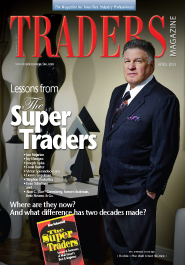
He made his name by appearing to predict a huge market downturn in a Sept. 21, 1987, feature in Barron’s, where he said: “There is a very good chance that this market has topped.”
When the stock market does slip, he said, “program trading will exaggerate the move to such a degree that the sell-off may be the steepest on record.”
Black Monday arrived one month later, with the Dow Jones Industrial Average dropping a record 22.6 percent, or 508 points, on Oct. 19. “Program trading” became the bête noire of the event and a common household villain.
That, and Sperandeo’s track record of being able to spot market trends and gauge risks, made him one of “The Super Traders” profiled in a 1992 book of that name that tried to set out in clear language and human examples the “secrets and successes of Wall Street’s best and brightest” minds. The areas of expertise and perspectives of these minds range from floor trading to institutional trading to market making to program trading and electronic trading.
When the book was published, there were three national markets: the New York Stock Exchange, the Nasdaq Stock Market and the American Stock Exchange. Together, they handled 407.3 million shares of equity trading a day, on average.
On the 20th anniversary of its publication, there were 13 national exchanges where trading occurs in the open, roughly 50 dark pools where firms trade anonymously and scores of internal pools of orders where brokers match trades before they go anywhere else. Average daily volume is 6.6 billion shares a day-and brokers, trading firms and exchanges are cutting back staff, because it’s a down market.
To get a variety of perspectives on the changes that have taken place in the past two decades, Traders Magazine caught up with Trader Vic, former Bear Stearns & Co. chairman Alan C. “Ace” Greenberg and seven of the other eight traders considered the top practitioners on Wall Street back then.
The purpose: To hear, in their own words, how equities trading has changed, how their careers have changed because of it and what lessons they have to offer from the 20 years that have gone by.
The updates on the careers of these nine “Super Traders” and former Bear chairman Greenberg have been compiled by Alan Rubenfeld, author of the original 1992 book issued by Irwin Professional Publishing, and Traders Magazine editor-in-chief Tom Steinert-Threlkeld.
Here’s the story of Victor Sperandeo, who made his name by being able to assess risk-and figure out market trends, as times change.
* * *
Trader Vic has moved far afield from his native New York.
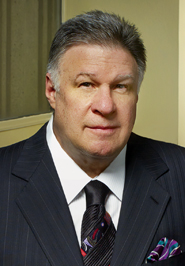
For the last four years, his office has been a stone’s throw north of a Mexican-themed restaurant known as Esparza’s in Grapevine, Texas, just north of the Dallas/Fort Worth International Airport.
Sperandeo moved to digs near the eatery that designates itself as the “Margarita Capital” of Texas because of the lower cost of doing business in the Lone Star State. Particularly, the lower taxes. That increases returns for his clients and himself.
“I’m all about taxes,” he declares, without hesitation. If you’re in the financial capital of the country-Wall Street-you’re getting “maxi-taxed” by the federal government and New York State, he contends. So he came to Texas in 1994.
In the Empire State, taxes on short- and long-term gains take away $38.51 or more of each $100 of profit on trading in futures or equities, by Sperandeo’s calculation. In the Lone Star State, only $30.09 gets taxed away. That leaves more than $8 on each $100 in his or his clients’ pockets.
Now 67, Sperandeo began his career in January 1968 as a trader at Filer Schmidt & Co., in New York, then the nation’s largest dealer in stock options. In the three decades that led up to the Crash of ’87, he traded successfully in stocks, bonds, commodities and currencies.
He launched Ragnar Options, which, for a time, became the largest dealer in options involving over-the-counter securities, before its operations were merged into Weeden & Co. For a short time, he ran a portfolio for George Soros’ Quantum Fund, a hedge fund that in 1992 became famous for “breaking” the Bank of England, with a huge short on the value of Britain’s pound. In 1992, he specialized in trading futures and was a registered commodity trading adviser.
He was known for the methodical method he used to assess market trends and to figure out when to get in and out of stocks.
In the mid-’70s, after missing a stock market low, he spent two years gathering any recorded information he could find on market performance in that pre-personal-computer era. He collected data back to the 1880s.
That allowed him to identify every discernible trend over nearly a century and classify each movement as short-term, intermediate-term or long-term. A “bull market,” he found, amounted to a “broad upward movement with a duration of months to years, lasting 1.8 years 75 percent of the time.” Within those moves, he found that “99 percent of the time,” short-term corrections to the upward trend last two weeks or less and do not exceed 5 percent of the original market capitalization.
Why would that matter? If an “intermediate trend” is also up, then a sell-off in the market of 3 percent in a two-week period would provide “excellent odds” for moving in and capitalizing on the long-term upward movement.
And you’d have time to act on it.
Back then, “you’d hit a stock up and, you know, the result wouldn’t be instantaneous. So the only way to make a living was to know the ticker symbols, so you could read the ticker tape and watch what the reaction would be,” Sperandeo recalled. “I did that for a considerable number of years, while there was a ticker tape and while the computerization of the marketplace was behind the curve.”
By 1986, Sperandeo, however, found that reading the ticker tape on stock price movements “stopped being useful.”
The end came, in his eyes, with the arrival of what quickly became known as program trading: computerized trading in baskets of stocks, based on predetermined conditions. This was not like the algorithmically driven orders used in recent years for high-speed automated trading, but instead was used by mutual funds, for instance, to increase holdings in prescribed ratios or to arbitrage in small price discrepancies.
“Program trading renders normal price movements irrelevant because, at any moment, a program can hit and upset what was once predictable from reading the tape,” he wrote in “The Super Traders.” “It is impossible to second-guess the manipulators and costly to be on the wrong side of their programs.”
By late 1986, he decided he could no longer keep up. And by 2000, he had essentially hung up his hat as an equities trader, although he jumps in on occasion when he sees a clear opportunity.
Instead of trying to compete with program traders or their successors, he set up two companies at the outset in 2000 and 2001.
The first was and is Alpha Financial Technologies, a “financial engineering” firm designed to create steady streams of revenue through the creation and licensing of indices.
The other was and is EAM Partners, which provides advisory services, based on fundamental and technical analysis of movements in stocks, options and futures.
Alpha Financial’s first and flagship index is known as the Diversified Trend Indicator, an index that tracks prices of 24 commodity and financial futures contracts. They are grouped into sectors, as well as “long” and “short” positions. The intent of the design was to capture “the economic benefit derived from both rising and declining trends” in futures markets.
That indicator was licensed to Standard & Poor’s from 2004 to 2009, along with a commodity trends and financial trends equivalent. A foreign-exchange trends indicator and global equity “rotator” index were added later. Now products linked to these indexes have been issued by financial firms ranging from Bank of America Merrill Lynch to UBS to Macquarie Bank and Guggenheim Investments.
When “The Super Traders” was published in 1992, Sperandeo had never had a down year in stock, options or commodity trading. Since the credit crisis, however, the indices he has created have been down more than once-and so would be any funds based on them.
“I have limited discretion in what I do,” he said. Even though the indices he created are designed to capture both up and down movements, choppy markets are losers, he finds.
Indeed, the hundred years of history he has based his trend-watching on no longer apply, he contends.
“The problem is, there never has been a period like this,” he said of the post-credit-crisis years. “And there never was a person in the White House that had the mentality of Barack Obama.”
The mandate that all businesses with 50 employees or more buy the most expensive health insurance available. Increasing marginal tax rates on savings and capital gains. Increased taxes on the nation’s highest earners. The use of federal spending to correct economic wrongs and to “invest” in America. The current president is creating a new form of “capitalism with a welfare state safety net,” in Sperandeo’s assessment.
What has changed, as a result, particularly in equities markets?
“You have stopped the correlation between corporate America and mainstream America,” Sperandeo contends.
Growth in the nation’s gross domestic product does not translate to greater employment. And top-line growth, at corporations or for the nation as a whole, is not what matters.
What makes the difference, across the economy and to create greater earnings, is the firing of staff and even top managers and executives. “Top-line growth has been miniscule,” in Sperandeo’s book.
The Federal Reserve’s board of governors, including chairman Ben Bernanke, have aided, abetted and even created a bubble in stocks. They have done so by keeping interest rates next to zero, long-term, and buying up assets, left and right, in what the Fed calls “quantitative easing.”
The Fed is taking on $3 trillion of risk (on the way to $4 trillion this year, Sperandeo says), with taxpayers holding the bill if the assets go bad. And with its continuing practice of buying bonds to keep interest rates low, which Bernanke assured markets again on Feb. 27 remains in place, “the Fed is stealing from savers,” Sperandeo told Traders.
In effect, “the truth has changed” about what moves markets in general and stocks in particular. “Corporate America is in its own world, a separate world to individuals,” he contended. “And government doesn’t attack corporations because that’s where they get their money. They attack individuals. And all a CEO does is say, ‘OK, I’ve got to pay 10 percent more in tax. I get a 10 percent raise,'” to make up for it.
The five lessons for equities desks, from Trader Vic, in 2013:
1. Disregard macroeconomic factors.
The gross domestic product may only grow at 1 percent a year. Unemployment will stay high. Even Bernanke said it was a “reasonable guess” that it would take until at least 2016 before the jobless rate could get back to 6 percent. Individuals don’t matter. Look for companies with strong earnings and defensible positions, in growing markets.
2. Avoid leverage.
It works against you. See Long-Term Capital Management (1999). See Lehman Brothers and all other major investment banks (2008). Do not lever your positions by any more than $2 of margin for every $1 of actual cash or stock. “You can’t find a smarter group of people, IQ-wise,” than at LTCM, whose founders included Nobel Prize economists Myron S. Scholes and Robert C. Merton, “and they blew up,” Sperandeo noted. Those were leveraged by 25 to 1 when Russia defaulted on government bonds and upset their apple cart.
3. Make sure your potential reward is three times as great as your potential loss.
That three-to-one ratio is the cornerstone of Sperandeo’s trading practices. The highest price for an ounce of gold, to date, is $1,910. The most recent low is $1,550. So if it’s trading at $1,620, you have a potential gain of $290 and a potential loss of $70. Probably worth the risk. The ratio of potential gain is 4:1. Then there’s Apple, trading near a 52-week low of $435. There’s likely an equal chance of going down another $75 as going back up $75. And hard to see it going back up $225. Not worth the risk.
4. Don’t trade “short term.”
Trading short-term “is very difficult because of the high-frequency traders,” in Sperandeo’s book. “It’s the program traders (effect). You just don’t know where they’re going to come from, to match you or beat you.” Even a “Super Trader” can’t win, any longer, on intraday trading unless you have a firm set up for the purpose, with lots of broadband capacity.
5. Don’t invest long-term.
The country is heading toward socialism, in his view. That makes it hard to be a long-term investor, because new business formation (and profit) will be reduced. And even healthy companies will be hurt.
His prime example: Profit for insurance companies in health care “is going out the window,” because of mandatory health care. “The greatest shorts in the world are health care insurance companies. Because they’re going to get screwed,” he said, with a sad laugh.
Which leaves trading for the “intermediate” term-looking a year or two out. “You can say well, the government’s not going to go over the cliff. The government’s going to solve the budget problems,” Sperandeo said.
“And you can assume that the market’s going up,” because the Fed will keep zero interest rates. Plus, it will keep printing money, as needed, to prop up the economy. It’s all about the Fed and liquidity, now, Trader Vic asserts.
What do you trade on now? Not news. Because high-speed traders “scalp” that instantly. Not on historical data and historic market trends, because those same automated traders have digested all those patterns that Sperandeo gathered by hand back in the ’70s and translated them into rules that govern the thousands of orders they send out each second of a trading day.
Bet on political moves, instead. “Politics is the game, now,” he said.
He points to a run-up in oil prices in October … just before the election of a U.S. president. The price of a barrel got up “$96 and there were White House hints we were going to use the strategic oil reserve,” Sperandeo asserted. “All of a sudden, the Saudi prince decided to increase production and oil goes back down $10 a barrel,” to $85 or $84.
Which is where “seeking the truth” comes into play. “You could say, if you were a conspiracy theorist, that this Saudi king just decided that,” he said. “I say that he got a phone call from Obama, who said, ‘Look, I need your help.’ And naturally he’s in office and you’re not going to deny him.”
The new secret for the “Super Traders” of today? Watching the real movers of Wall Street. Who are more likely to be in Washington, D.C., or a corporate boardroom, now.
“The CEOs, the politicians, the Fed, all of whom are politicians,” he said. “They’re all on the side of making stocks go up. Government is manipulating the markets.”
Author, “The Super Traders”
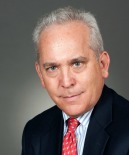
Alan Rubenfeld
After writing “The Super Traders” in 1992, Rubenfeld worked on the sellside of the securities trading industry, spending the majority of his career at Deutsche Bank Securities as a sales trader with its Global Portfolio Trading platform. He is currently working as a salesman in the exchange-traded fund industry.
The Options Trader
Jon Najarian
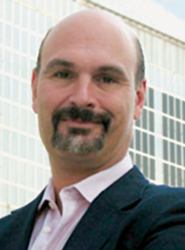
Then: Founder and president, Mercury Trading
After a brief stint as a pro football player with the Chicago Bears, taught himself options trading. Sold Mercury in 2004, to Citadel.
Now: Co-founder, optionMONSTER and tradeMONSTER; CNBC contributor
Today, 95 percent of all trades on the Chicago Board Options Exchange are electronic. Essentially, the options industry has been taken over by the machines. Twenty years ago, the veterans on the floor taught the newcomers such as me how to trade. The skills were passed from generation to generation. Today, that is essentially all gone. Also, people still have relationships, but they are not nearly as important for business, because there is precious little face-to-face contact; it is essentially all anonymous. You get the order because you are the best bid or offer, and you have very little idea as to where it originated.
The democratization of the process has been very amazing, but at the same time it is pretty impersonal. There is almost zero growth or new blood coming into the options market. A generation ago, there was always the ability to sell your book to a newcomer. That doesn’t exist anymore. It is no longer a viable career path.
Looking back, I would say I am 90 percent pleased with the way the options business has evolved over the past 20 years. I would say that my major criticism would be the advent of the “maker-taker” model. I think it is ludicrous to be paid to provide liquidity to the market. If it is just on merit, that is a much fairer way for a market to function, but to have computers choke the system with quote traffic just so high-frequency trading firms can get paid for making markets doesn’t make sense to me. This is a good example of a bad change. Unfortunately, I don’t think anyone has the moral compass to change the status quo. The situation engenders a lot of high-frequency trading, which I believe to be a major negative for capital markets.
It has been an interesting transition, from my days as a floor trader and doing a little money management to today not floor trading at all and being a commentator for CNBC (for the past six years), running a successful options strategy website (optionMONSTER), developing the top-rated online brokerage firm (tradeMONSTER) and growing a wealth management business. We refer to it all as a “virtuous circle,” where our television appearances serve to promote our brokerage and wealth management businesses.
The Specialist
Robert A. Scavone
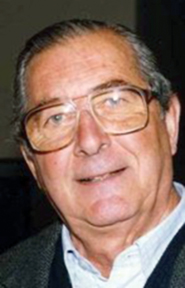
Then: Managing partner, Scavone, McKenna, Cloud & Co.
Began career in 1948 as a page on the New York Stock Exchange, running messages around the floor for brokers. Became specialist clerk in 1954 with Walters, Peck and Co. In 1965, acquired seat at Robb, Peck, McCoey & Co., a large specialist firm. From 1986 until 1992, ran Scavone, McKenna, Cloud & Co., a highly rated specialist organization on the New York Stock Exchange. Specialized in shares of CBS, Reynolds Metals, Golden West Financial, the Boston Celtics, Banco de Santander, ConAgra and Fiat. Key to success: “The most important factor in survival is inventory; you have to keep your inventory flexible.”
Now: Deceased. Passed away May 12, 2008.
The Institutional Trader
Jay Mangan

Then: Managing director, head of equity trading, Citibank
Helped transform institutional trading from a clerical function into a profession. “The way to do this is to get the first call priority treatment from the Street. If you’re just turning your hands over and dumping out commissions, you’re just an order clerk.”
Now: Retired
I had a fantastic career on Wall Street, working on the sellside and buyside, retiring from Citibank in 2003. One way I was able to last so long was my ability to always adapt to new and innovative ways of trading. I was an early user of order management and electronic trading systems, although nothing to the extent that they are now utilized. And to think I started my career on the Midwest Stock Exchange, where price discovery took place on big chalkboards.
I actually believe my most productive years were in my 50s, where I was able to benefit from all the relationships I had developed at Citi and expand my role at the bank through trading for various departments, whether they be in M&A, Treasury or other investment departments. However, when it was time to retire, I had no regrets. And retirement did not dampen my competitive spirit. Shortly after leaving the business, I participated in the Polar Dash, a grueling 60-mile expedition on skis to the North Pole across the polar ice cap. Even consuming 8,000 to 10,000 calories a day, I still lost 30 pounds.
The market is a much more dishonest place these days. Twenty or 30 years ago, you could not hide behind dark pools and the like. It was much easier to look at the tape and know that you had been screwed. You can’t easily do that today. In earlier times, relationships really mattered; things are so much more transactional today, and it is much easier to hide behind an algorithm.
However, once a trader, always a trader. In my retirement, I became an active trader on eBay. I have always collected American Indian artifacts and art and have built a rather substantial collection over the years. Perhaps the greatest trade of my life was when I bought a 19th-century American Indian war shirt once owned by Chief Black Bird. I bought it for $80,000 and sold it at Sotheby’s for $2.5 million.
The Sales Trader
Joe Apisa
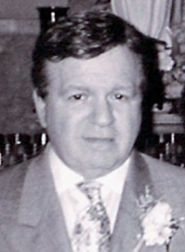
Then: Managing director and head of institutional equity trading, Gruntal & Co.
Worked in equity trading division for Michael Bloomberg-at Salomon Brothers, before the future data-terminal billionaire got fired. Left Salomon to run Drexel Burnham Lambert’s equity sales trading operation.
Now: Retired
The securities trading business as I knew it doesn’t exist anymore. Many of the most important elements of being a successful sales trader-getting the important first call for an order from the buyside trader, the negotiation process with your block trader, building a relationship over many years with your client-this is all a lost art. It is gone forever.
There is no interaction between the buyside and sellside to talk about blocks of stock and to negotiate. In my time on the desk, consistency built trust. This can’t take place if you are not talking to your client. Today it all goes into the machine and it matches up.
Technology has taken the humanity out of the securities trading business. It all started with the growth of Instinet in the United States, which probably precipitated the closing of multiple brokerage firms.
Twenty years ago, a good block trader would have maybe 10 to15 stocks on his blotter, but he would know them like the back of his hand. I had dinner with an old colleague last week. He told me he makes markets for 600 stocks at a time. The computers make the markets. A different world.
Certainly a key driver of many of the changes has been the incredible compression of commissions over the past 40 years or so. Before May Day 1975 and the abolishing of fixed commission rates, I could trade 10,000 shares of GM and receive 45 cents per share. Today, most institutional traders might get a penny or two per share for their efforts, albeit on much higher volumes.
After my sales trading days were over in 2003, I started a small brokerage firm with some friends, dedicated to day traders. Most of them who traded this way eventually blew up. It happened all the time, and I bet it still goes on today.
I loved the business, and it enabled me to pursue my other great passion: horse racing. I had a horse farm for 10 years. That was a lot of fun. Today I trade my portfolio from home and manage my kid’s investments as well. I also trade diamonds and gold.
Third-Market Developer
Frank Baxter
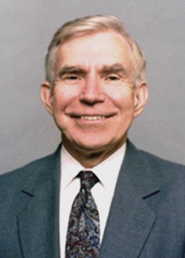
Then: Chairman, Jefferies & Co.
The “third market” was the trading of exchange-listed stocks over the counter. Jefferies became the leading third-market operation, and Baxter restored vitality to the firm after a censure of its brokerage unit by federal regulators. Jefferies is a significant player in the global capital markets.
Now: Chairman emeritus, Jefferies & Co.
As technology has dramatically reduced transaction costs, the ability to start a business becomes much easier. In the financial services industry, this is most evident in investment management, where technology has made it almost seamless to start a money management firm from scratch. All of a company’s operational functions and infrastructure can be outsourced.
Unfortunately, we have not seen this on the sellside. Banks have become larger and government intervention has created a “too big to fail” syndrome, much to the detriment of smaller organizations in the financial services economy. Technology should allow innovative firms to challenge the financial services giants, as the third-market firms of the 1960s did.
I see our country returning to a much more individualized, entrepreneurial society, where you don’t have to be part of a large organization in order to start a business.
I have spent the last several years working to improve K-12 education. I am co-chairman of Alliance College-Ready Public Schools, which operates charter schools in Los Angeles. There is a revolution taking place that allows for a personalized delivery of education, as opposed to the traditional lecture, one-size-fits-all model we have been following for almost 200 years. I believe state government intervention is preventing 16 million inner-city kids from getting an education that would enable them to successfully negotiate the 21st century.
I also had the privilege of being the American ambassador to Uruguay from 2006 to 2009. My Spanish was almost nonexistent before I went, but I can get by quite nicely these days. The people are wonderful and I still return frequently, helping them with their elementary education and capital markets.
Today, Jefferies is one of the leading global financial institutions. While the company has dramatically evolved, the values and traditions it was built upon remain the same, and it still starts with putting the customer first. It also means having a very flat organization and a firm where employees are also shareholders. So while Jefferies has adapted to changing conditions, its values have remained constant.
During the dotcom bust and the most recent market meltdown, we had the opportunity to obtain some very high-quality individuals and businesses. We are able to take advantage of volatility in the marketplace, not only in securities, but also in people and businesses.
The Regional Floor Trader
Denny Engelman
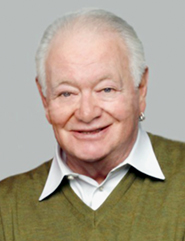
Then: President, Engelman Securities
Engelman & Co. operated on the floor of the Midwest Stock Exchange for more than 30 years. Engelman and partners siphoned off trading volume from the New York Stock Exchange. The firm charged a penny and a half a share to execute an order.
Now: Retired
My Wall Street is long gone, but I saw the change coming long before it actually happened. That is why when I had the chance to sell our company in 2002, I jumped at the opportunity. The night before we closed the deal, my partners and I had a seven-hour meeting. My position was simple: If our value to the Street stayed viable, we could make the carrot that was tied to the end of the deal over the next three years. My partners were reluctant to give up control of the baby we had nurtured for more than 30 years. Ultimately, we decided to sell out and my reasoning turned out to be correct: Penny spreads and rapidly changing technology made us dinosaurs within the next two years. We didn’t get the carrot, but we still sold out at the top.
Technology changed everything. In the ’70s, ’80s and early ’90s, the art was to put two orders together by negotiating the spread. But with the advent of penny spreads, it was no use for a floor broker to put people together, because you can’t negotiate a penny. In addition, the use of volume-weighted average price trading strategies disintegrated the real reason for a floor broker. VWAP was just a computerized method to spread an order over time without taking any risk. Clients would not want brokers pick a point in time and buy the order because they did not want to take the responsibility of making a bad trading decision. Any broker who was able to trade VWAP soon became the preferred trading counterparty to the client.
Looking at all the changes taking place, I could see the writing on the wall. The demise of the middleman on the floor was inevitable. As history shows us, the only thing in life that is consistent is change, and that rate right now is unprecedented. But we need strong enforcement of our current rules and a change as to how we oversee trading, whether it be a stock, derivative or commodity.
I chuckle as I observe the market from my perch in the mountains outside of Las Vegas, where my wife and I have lived for the past three years. At least now I can chuckle as I listen to the bobbleheads on TV! I’m pretty damn happy-I’m still vertical.
The Program Trader
Stephen G. Bodurtha

0)]
Then: Vice president, Merrill Lynch, Pierce, Fenner & Smith
Program trading at first was handled just like any other form of stock trading: on paper. It just involved scores or hundreds of tickets. Then, computers allowed the manager of an index fund or a quantitative portfolio to hit a few buttons and send a list of orders to the appropriate exchanges for execution.
Now: Managing director, head of investments for North America, Citi Private Bank
I had a pretty significant role at Merrill Lynch with others in launching Sector SPDRs (an early form of exchange-traded funds). We worked with State Street Bank and Trust, in partnership, and we were a key driver. We created nine sector SPDRs on the same day and raised close to half a billion dollars for clients. It was a great example of giving financial advisers the kind of tools they needed to run better, more diversified portfolios for clients.
I thought the vehicle, exchange-traded funds-as time has gone on to prove-had tremendous potential, as it related to delivering diversified, potentially low-cost portfolio building blocks for clients.
In 2009, I decided to take on a new role at Citigroup and was named head of investments for Citi Private Bank for North America. The mission we continue to pursue here at Citi Private Bank is to be the unquestioned leading private bank, globally and in North America. In North America, one particular opportunity has been, with the separation from Smith Barney, to make investments a very prominent and successful part of the private bank business.
Clients had been through a rough time in the markets and also with their financial providers, while professionals in our industry had been going through a rough time as well.
Technology [in this time] has become the dominant mechanism by which markets conduct their business. Today, it is less of a face-to-face business, and the specialist system has essentially given way.
Today you have a complex network of markets. I would also say it is freer.
In my opinion, having things like circuit breakers and the like are not a bad thing. With markets now dependent on technology in a fundamental way, it’s very important that we maintain our security, because the stakes are larger, the dependency is greater.
But I think largely speaking, the evolution we’ve seen was inevitable, and probably the best thing at the end of the day. For example, when we’re investing on behalf of our clients, using our electronic systems to execute in a brokerage capacity is fast and cost-effective.
The Electronic Trader
Evan Schulman

1)]
Then: President, Lattice Trading
Lattice allowed institutional fund managers to get access through a single terminal to most electronic markets. Tools provided the managers gave them the ability to make orders conditional on other market events.
Now: Founder, Tykhe LLC
When I started in the late 1960s, New York Stock Exchange volume was about 20 million shares a day and the floor was crowded with traders. It was incredibly inefficient, having to physically move from post to post to drop off tickets. Now we trade billions of shares daily and there is nobody on the floor! The increase in productivity is unimaginable.
Technology had to change trading simply because there was no alternative. With the massive institutional buildup of assets, you just could not keep hiring more traders. But I am surprised as to how far the transformation went, to where today where you have computers doing virtually all the trading. Once it started, people got on board pretty quickly. But from someone who was there at the beginning, the process seemed to take forever to start.
Today, because of the narrowing of the spread, putting in an institutional-size limit order to the market is a fool’s errand. People will front run your order for a penny or less. Algorithmic trading and dark pools had to occur, because otherwise you would be picked off all day. At Lattice, we did use dark pools, unadvertised orders sitting between the bid/ask. I joked that the NYSE also had dark pools-they were just called “price improvement.”
Institutions should behave as information-less traders because of their size. But continuous markets make that difficult and leave one open to meeting traders with information. I would have thought that by now, institutions would be doing most of their business on call markets, such as exchange openings and closings or on venues such as POSIT. Markets which, because one has to wait until the “call,” are inconvenient for traders trying to exploit fast-moving information.
Today at Tykhe, we have patents on a new type of security: sales certificates, where their return is based on a percentage of the issuing firm’s revenues for a fixed period of time, say 10 years. We think this a solution for the federal government. GDP certificates, where the government pays a set percentage of GDP to investors, is not debt, so the debt ceiling problem goes away. Also, because they expire in, say, 30 years, and do not need to be rolled over, we are no longer saddling our children and grandchildren with the debt of our profligate ways. I hope they’ll listen.
The Chairman
Alan C. Greenberg

2)]
Then: Chairman, executive committee, the Bear Stearns Companies
Greenberg rose through the ranks of Bear Stearns to serve as its chief executive from 1978 to 1993 and chairman of the board from 1985 to 2001. Bear Stearns was acquired by J.P. Morgan Chase in March 2008, the first signal event of the financial crisis that erupted that year.
Now: Vice chairman emeritus, J.P. Morgan
I believe one of the most significant changes over the past 20 years has been the huge amount of volume traded away from the New York Stock Exchange. We have also seen the dramatic increase in high-volume trading, which I don’t believe is a negative at all. In fact, I think trading markets are remarkably good right now. Believe me-I don’t see the negatives. The liquidity available today allows me to buy or sell a big block of stock within 3 cents of the last sale, and I can get in and out of positions with unbelievable ease. It is amazing, and I consider this a major change to the markets.
If somebody wants to buy a stock on Monday and sell it on Thursday, they are going to go broke anyway. High-volume trading is not going to help them. You can’t make a living doing that; maybe one person in 1,000 will be successful. But for an investor who holds a stock for three or six months, the ability to buy it at a good price and be able to sell the position close to last sale-tell me, how does the system hurt them? People who see a danger in this frankly don’t know what they are talking about.
We have also seen the complete disappearance of investment banks. Bear itself, Merrill Lynch and others have been taken over by commercial banks such as J.P. Morgan, Bank of America and Citibank. Even Morgan Stanley and Goldman Sachs are now commercial banks and highly regulated.
I was always looking for PSDs to recruit for Bear Stearns-young men and women who were Poor, Smart and had a Desire to make money. But today, the pool of young talent has narrowed along with the job opportunities, and they tend to all come from a handful of colleges. And this is a shame. After six months working at Bear Stearns, I had no idea whether an employee was Ivy League or not-they were either smart or dumb. Unfortunately, there are just fewer opportunities because there are not as many firms out there these days.
(c) 2013 Traders Magazine and SourceMedia, Inc. All Rights Reserved.
http://www.tradersmagazine.com http://www.sourcemedia.com/





